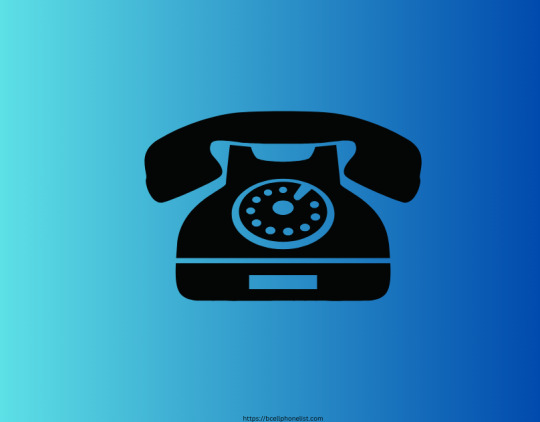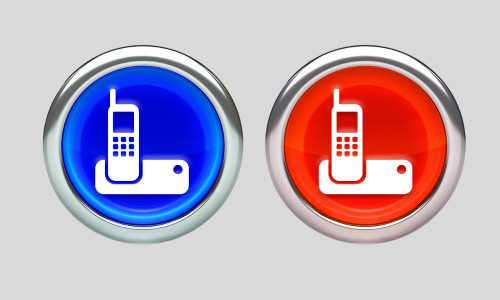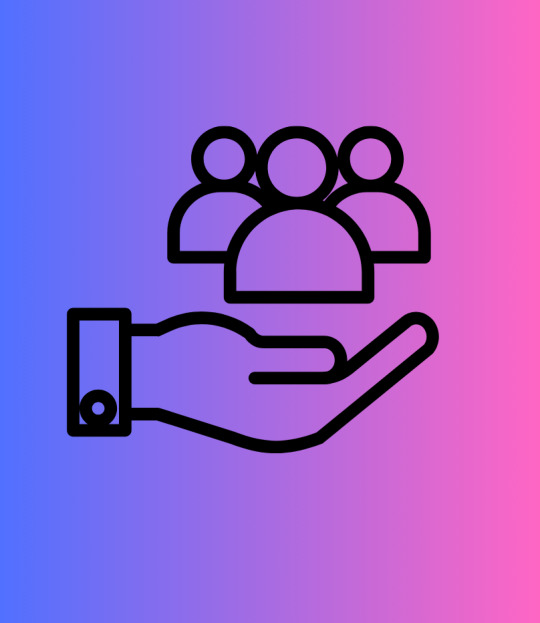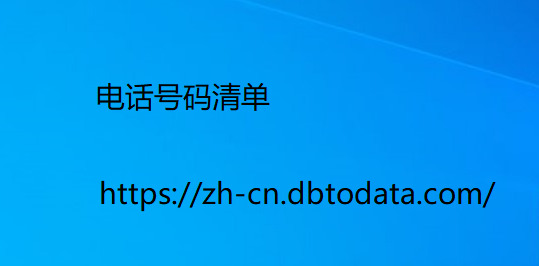Don't wanna be here? Send us removal request.
Text
Boost Your Sales with Our Expert Lead Generation Services!
Are you struggling to find high-quality leads for your business? Look no further! Our professional lead generation service helps you connect with real, targeted prospects who are ready to engage with your brand. Whether you're in real estate, digital marketing, B2B, or eCommerce — we’ve got the strategy, tools, and experience to grow your business. ✅ What We Offer: Targeted B2B & B2C Leads Email List Building LinkedIn Lead Generation Cold Calling Lists Geo & Industry-Specific Leads Verified Contact Information 💼 Ideal for: ✔️ Digital Marketing Agencies ✔️ Real Estate Agents ✔️ eCommerce Stores ✔️ SaaS Companies ✔️ Business Consultants 📈 Why Choose Us? 🔹 100% Verified Leads 🔹 Custom Targeting 🔹 Fast Turnaround 🔹 Affordable Pricing 🔹 Guaranteed Satisfaction 👉 Start generating more leads, closing more deals, and scaling your business — today! 🔔 Don’t forget to like, share, and subscribe for more business growth tips! #DigitalMarketing #LeadGenExperts Contact Us: Email: [email protected] WhatsApp: https://wa.me/8801918754549 Telegram: https://t.me/bcellph
0 notes
Text
Optimizing PPC Search Ad campaigns to generate higher quality B2B leads
Running PPC ads is one of the quickest ways to acquire B2B leads. This is especially the case for Search Engine ads. If you run a B2B insurance company, what can be better than someone searching for “corporate insurance”? Well, this would work wonders if you had unlimited money. But, in the real world, if you run PPC ads without putting much thought, you would be burning money. For B2B advertising, cost per click is often high. For a Google search ad for B2B competitive keywords, the cost per click can be as high as 50-100$. Having bad clicks can be very expensive and put a huge dent in your profit margins. Not only that, it may even disrupt the entire sales process of your company if your business depends on it. Optimizing ads is the most vital process of PPC advertising to improve ROI.
Advanced Link Tracking
When you run ads, your advertising platform will provide you ad level statistics like link clicks, CTR, budget spent, etc. If you use pixel tracking, it can also tell you how many users have converted. This information is useful but not enough. Information on things that happen after the click is important to optimize campaigns and generate quality leads. To accurately track visitors from your ad campaigns, you special database need to add UTM tracking parameters to your ads.

A UTM parameter is a string that is attached at the end of your URL. You can attach different UTM parameters to differentiate leads from different ads.
On Google Ads, you can do this simply by adding a With this parameter, you will know exactly which keyword a lead searched for, which ad they saw, which campaign they came from, etc.
Here are a few examples:
You can add this parameter on your Google account from ad level, campaign level or account level. For a detailed guide, refer to this article.
Once you have included the parameters, Sales panel can start doing the magic. Leads that are captured will have the tracking parameters. You can use this to segment leads and find out which leads came out from which ads. For example, you can set up segments for different ad campaigns to measure results. We will discuss how this is important throughout the rest of the article.
Targeting
Everything about your PPC campaign comes down to targeting. If your ads don’t reach the right audience, your conversion rate will be low. Before you start targeting, you should think about how your ideal customer profile looks like. Where are your ideal customers located? Do they have a job role? Do you sell to large companies? What are your leads interested in? Do they have an intended behavior? Do they belong to specific communities?
Some advertising platforms have better targeting options than others. For B2B companies, LinkedIn has a plethora of data. You can target leads based on job role, firmographic information, interests, etc. For Google search ads, you will need to find out what your customers search for and where they belong. You can also show your ads when a prospect searches for a competitor keyword. A/B test your targeting, segment ideas into different ad sets, play around with the bidding and eventually you will find the right combination.
Analyzing PPC traffic
After you set everything up, you will be able to start seeing traffic on your website. This is the time to analyze how your campaign is performing and whether you are getting relevant clicks. To analyze traffic as a group, the best tool to use will be Google Analytics. With Google Analytics, you will be able to find important statistical information. For a more in-depth look at every individual visitor, Sales panel will be the right tool for you. To analyze traffic properly, these questions need to be answered first:
Am I getting legitimate clicks? How much time are visitors spending on my website? Do they visit multiple pages?

What is the conversion rate? Is my cost per conversion in check?
Do signed up visitors fall under my ideal customer profile? Are they showing legitimate business interest?
Does their behavior show buying intent? Are they getting in conversation with us? Did they complete their account setup?
On Sales panel, a visitor is tracked in real-time and will show up as an Anonymous Visitor or an identified Visiting Company till they sign up. Use Feeds to segment out users from different keywords or ad campaigns to start monitoring performance. Sales panel logs how long a lead has spent on each page on your website and how many pages they visited. You will also notice that some visitors come back later to sign up. If you find that a lot of visitors only visited one page and spent less than 5 seconds on your website, you are getting bad clicks. If this continues to happen after spending a good amount of budget, you will need to go back to the drawing board and start experimenting again.
Once you find your way to the right visitors, you will start seeing sign-ups. Now, in the B2B segment, you need to choose your leads carefully. Use the data provided by Sales panel to understand if signed up users are relevant to you. For example, if you sell high ticket solutions for enterprises, you won’t find small companies relevant. This also applies the other way around. You would also want your leads to have the authority to push for the purchase of your product. Again, use profile data provided by Sales panel to find out if your leads have the ideal job roles.
You will also need to analyze lead behavior to understand if leads are showing serious buying intent. If your leads are spending a decent amount of time on your website, completing sign-up and product activation or checking out prices, they are showing buying intent. If they perform important steps during a trial like adding team members, they are product qualified. Analyze a lead’s behavioral information along with their profile and firmographic information to determine quality and purchase intent.
The final piece of the puzzle is the cost. If your customer acquisition cost (CAC) is greater than the customer’s lifetime value (LTV), you will be losing money. Now at initial stages, it makes sense to have CAC greater than the LTV but at some point, you will need to balance the sheets. Decide what your optimal conversion rate is and set the bidding and budget for your adverts accordingly. Keep an eye on bid and budget as you will often see ups and downs. If things make sense on average, everything will fall into place.
0 notes
Text
B2B marketing and engagement during the pandemic?
How do we start talking about this in a time of public health crisis affecting several lives and businesses going under with people locked down in their homes and being anxious? An event like this happens once in a lifetime after all. The COVID-19 pandemic has changed how we work. Many of us are working from home right now. Us talking about the human aspect and the human cost of this pandemic will be moot as this is not an area of our expertise. What we can talk about is the business aspect and how it affects us as marketers.
In late February and early March, when things first started getting out of hand, businesses started to worry. The equity market crashed around the world making way for the bear market. With employees not able to work, most parts of the economy that relied on physical presence had to be halted. Digital businesses like ours (and possibly yours and your customer’s) have moved to ‘work from home’ strategy. With customer acquisition getting halted, businesses have started doing budget cuts all over to survive. When it came to SAAS, they started pausing subscriptions and certainly not starting new ones. The signs of an oncoming recession became obvious. This started a vicious cycle europe cell phone number list that has been best explained by Rand Fishkin in this blog post.

Fast forward to today… It has only been 45 days and we are still in the middle of the crisis but these 45 days have felt like eternity. People have spent the last 45 days in high uncertainty and the uncertainty still exists although many people have started to settle down. That’s what we humans do, we get used to it. In the US, the Fed is pumping a good amount of money to save the economy and this has brought some recovery to the market. Although, it can’t be said that the volatile phase is over. The next crash can happen at any time and it won’t be the first time where the market recovered partially only to crash harder. Even after the outbreak is over, the consequences will be visible for a while. Businesses are going to struggle for a good amount of time. Especially the small businesses. Even blue chip companies are at risks of failure without government handouts. Well, that’s a different topic of discussion. The point is that people are starting to settle down. Unless something crazy happens, it can be believed that we have crossed the initial panic stage.
Where are your customers now? What are they doing? If your customers are digital businesses, they are probably working from home right now. Even if they aren’t working from home, they are still online. But, they are certainly not buying as much as their companies are trying to cut costs. Here’s a chart from Neil Patel’s blog.
Some of your potential customers are also distracted and facing productivity issues as they tackle the pandemic and the new work environment. As people are isolated, they are spending time on social media platforms to stay in touch with the rest of the world and their families and friends. Facebook is seeing massive traffic spikes due to this. Although the maximum spike is caused due to messages and video calls, people are also spending more time engaging on the platform. According to them, 70% more time is being spent across their platforms. Here’s a screenshot from their application:
What does it mean for you as a marketer? Before we get into this, we have to repeat what industry experts are saying: Show empathy towards your customers and do not try to exploit the situation.

In a survey conducted by Avionos.com in 2019, they asked B2B buyers what they would expect from businesses if a recession hit in 2020. This now ends up being a terrible coincidence but it brought an interesting answer: Most buyers ended up voting for better resources that would provide them valuable information and also help them make their purchase decisions. While it is understandable that their stand can change while shifting to a real world scenario from a hypothetical question, it provides a strong ground work on what we are discussing today. To sum up:
Your customers are probably spending decent amount of time on Facebook B2B buyers say that they would like better resources if a recession were to happen. An opportunity has opened up for you to have meaningful engagement with your prospects and customers
The Solution Sales panel tracks all of your visitors, leads and customers in real-time and enriches them with B2B information. It also helps you segment or qualify visitors with company and behavior information and also use CRM data and user profile data in addition to that for leads/customers. This data is sent to Facebook which effectively helps you accomplish these things:
Run retargeting ads to only qualified visitors from your website. Create lookalike audiences of your best leads and customers. Only target visitors/leads who have a desirable buyer profile or perform desired set of actions. Personalize served content based on customer profile and behavioral patterns. Optimize bidding and dynamically allot value based on deal size, win probability, etc.
Here are some use case ideas:
Segment based on company size and industry to serve business relevant posts. Sync lead score value or deal value to conversion tracking for bidding optimizations. Qualify leads based on intent and ICP and serve ads to only qualified leads Segment leads based on interests and serve them personalized ads based on products/use cases/solutions/services they are interested in. Serve nurturing content based on deal stage. Your ads will dynamically serve content based on where your leads are on the buying cycle.
0 notes
Text
优化 B2B 网站以更好地产生潜在客户的 6 个简单技巧
优化 B2B 网站以更好地产生潜在客户的 6 个简单技巧
您是否应该优化网站以吸引潜在客户,这一点毋庸置疑。事实上,任何品牌代理机构都会告诉您,优化是 B2B 网站的主要目的,此外,它还能提升品牌知名度和企业形象。
不幸的是,仅仅决定通过你的网站吸引更多潜在客户,并不能神奇地提高网站在这方面的效率。偶尔添加一些行动号召 (CTA) 并不能让你一夜之间就吸引到大量新客户。
相反,设计师和营销人员被迫进行战略性思考。为了撰写这篇文章,我们邀请了圣地亚哥顶级网页设计公司的一些顶尖专家,并分享了一些快速技巧,供您用来优化网站,从而更好地吸引潜在客户。
潜在客户生成 101
在真正了解如何优化网站之前,您至少需要对潜在客户开发流程有所了解。如果您已经熟悉这个概念,不用担心,我们不会讲得太详细。
那么,是什么让一个普通的网站访问者变成了潜在客户呢?
当访问者点击网站某个页面上的 CTA(号召性用语)按钮时,潜在客户生成过程就开始了。
CTA 会引导访客进入一个落地页,该页面通常包含一个表单,我们用它来收集访客的信息。填写并提交表单后,访客通常会被带到一个“感谢”页面。
现在我们已经了解了有关潜在客户开发的基础知识,让我们开始谈正事吧。
提升 B2B 网站潜在客户生成的 6 个技巧
您可以通过多种方式优化您的网站,从而获得B2B 潜在客户。我们列出了六种我们认为最有效、最关键的方法。快来看看吧!
确定您当前的潜在客户生成状态
无论你正在开展哪种类型的商业项目,对当前情况进行基准测试都至关重要。这能让你随时追踪项目进展,并找出最需要改进的领域。
如果网站中有几个页面在您没有意识到的情况下就能出色地产生潜在客户,那么您为什么要修改整个网站呢?
要进行彻底的审核,请尝试找 手机号数据库列表 出大部分外联和在线流量的来源。这些是您的潜在客户生成器,以下是一些��常见的:
社交媒体——您可能正在从参与 LinkedIn 或 Facebook 等平台上的某个 B2B 营销活动的用户那里获得流量。
电子邮件——用户可能会通过电子邮件简报或 B2B 电子邮件营销活动点击进入您的网站。
博客文章——您表现最好的博客文章和访客文章也可以产生大量流量。
实时聊天——B2B 流量通常是通过用户通过您网站上的实时聊天功能联系您的销售团队或客户服务产生的。

一旦确定了流量来源,您就需要确保访问者所访问的页面能够尽其所能地激发他们对您的产品或服务的兴趣。
假设你的分析工具(B2B 使用 Salespanel)显示,大多数潜在客户都是通过 LinkedIn 营销活动的入站链接进入你的网站的。在这种情况下,你应该专注于更新他们访问的页面,并保持他们与你网站的互动。
将长篇内容添加到访问量最大的页面,但将其放在弹出窗口后面,要求访问者留下他们的联系信息。
如果您感觉特别自信,您甚至可以将最受欢迎的内容置于软付费墙之后,但要谨慎使用此策略,因为您不想疏远任何潜在的线索。
测试每个现有的销售线索生成器
像网站 Grader这样的在线工具可以帮助您评估潜在客户生成来源,并提供有关如何改进内容、登录页面、CTA 等的反馈。此类工具还允许您将表现最佳的登录页面与表现不佳的登录页面进行比较。
例如,你的落地页 X 每周可能吸引数千名访客,但转化率仅为 1%。与此同时,落地页 Y 每月可能只吸引数百名访客,但转化率却高达 5-10%。
您的下一步可能是比较两者并了解如何优化页面 X 以获得与页面 Y 相似的转化率。
最后,您可以生成一份内部报告,评估您的CTA点击量、落地页访问量和感谢页分享量,找出哪些优惠效果最佳。然后,您可以优先考虑这一策略,并创造更多表现最佳的潜在客户生成器。
推广白皮书或电子书
另一种有效且非侵入式的提升品牌兴趣的方法是创建博客内容,推广白皮书或电子书。这样,访客可以了解更多关于他们感兴趣的主题的信息,同时获得联系信息。
只要你能有效地结合两种在线营销理念,总是一个好主意。这种方法尤其结合了搜索引擎优化 (SEO) 和潜在客户开发。
通过信息丰富且具有教育意义的博客内容,您可以提升必要的页面权重,从而将您的网站排名到谷歌搜索结果的第一页。这对于潜在客户开发来说是一个相当大的优势,因为通过谷歌搜索访问您网站的 B2B 自然访客通常会遇到您的产品或服务可以解决的问题。
首先,对与您的利基相关的主题进行彻底的关键字研究,并撰写一些围绕该主题的博客文章。

接下来,撰写一篇深入探讨主题的长篇内容,并将其以 PDF 形式呈现在您的博客上,以换取读者的姓名、公司和电子邮件地址。
通过电子邮件向每个用户发送他们感兴趣的资源后,请继续通过回扣电子邮件和新闻通讯与他们保持跟进,以保持他们对内容以及您的品牌的兴趣。
使用实时聊天服务
实时聊天服务日益复杂。不仅如此,它们也不再是一种奢侈的享受,而更像是一种意料之中的功能,尤其是在 B2B 互动中。如果您的网站没有实时聊天服务,就意味着错失了一个强大的潜在客户开发工具。
我们之前提到的网站审核也能帮助你设置实时聊天。它会显示访客在哪些页面上花费的时间最多,这样你就可以在潜在客户最需要帮助或信息的地方安装实时聊天服务。
让您的销售团队与潜在客户交谈,可以让他们以随意的方式了解受众对您的产品的看法及其需求。
将您的销售团队和客户服务团队整合到您的实时聊天中也是一个好主意,确保无论对话最终如何进行,都能满足您的客户的需求。
您还可以利用网络研讨会,这为交叉销售和追加销售您的产品和服务提供了绝佳的机会。ActualTech Media 的程序有助于吸引更多网络研讨会潜在客户,使网络研讨会的运行更加轻松。它们会向访问者全面概述您的服务,并促使他们购买或注册免费试用。
通过个性化的 CTA 满足每个用户的需求
网站上的动态内容能够满足每位访客的体验需求。通过这种方式,每位访问您网站的访客都能根据他们之前购买的商品或浏览过的页面,看到与其兴趣相关的产品选项、按钮、图片等。
这看起来可能有点不必要的噱头,直到你了解到个性化的行动号召比基本行动号召的效果要好200%以上。换句话说,页面个性化和动态内容可以帮助你的网站吸引更多潜在客户。
0 notes
Text
What is Revenue Marketing?
The goal of marketing is to generate revenue, of course. But, things often get complicated and marketing teams fail to directly connect campaign specifics to revenue, especially in the B2B space.
Earlier marketers would generate leads, qualify them, send them to sales and consider their job to be done. In this system, the role of the marketing team pretty much ends at handing over the generated leads to the sales team, where they pursue the leads further. Sales would also need to do nothing on leads that are not ready for them to close. The buying process has changed and the status quo has changed with it.

By definition, revenue marketing refers to the holistic process of identifying specific channels in marketing that offer revenue growth and aligning sales and marketing efforts with revenue. In this form of marketing, a more comprehensive approach is followed where both the marketing team and the sales team work together to maximize ROI.
Marketing also needs to have a closed-loop system and fetch data from sales in a 2-way sync scenario (instead of the most commonly used marketing to sales data transfer). It is the combined effort of the sales and marketing team to drive revenue growth in a predictable way, by creating a constant and continuous loop of feedback. It seeks to develop strategies that can be effectively repeated to drive new customer acquisition and in turn predict sales and revenue.
Here’s what revenue marketing aims to achieve:
Generation of sales-qualified leads and driving them straight into the sales funnel. Successful attribution of sales to campaign specifics for replication. Aiding the smooth and solid journey of customers across the funnel. Marketing enablement even after leads get passed on to sales. Aligning sales and marketing to work towards the common goal of generating revenue.
Rise of revenue marketing The revenue marketing concept was brought to light with the book, Rise of the Revenue Marketer, back in 2010. This happened in the time period when digital marketing automation, data-driven marketing, and CRMs, in the telemarketing data form we see today, started to gain huge momentum.
Like we mentioned earlier, the marketing status quo has changed and marketers are now closely tracking and working on customers till the end of the buyer’s journey. Marketers continuously engage with buyers even after conversion for retention and upselling.
The latest CRMs and marketing automation solutions provide a 360-degree view of customer relationships including data on the impact of marketing activities, making it easier for the marketing manager to monitor the outcome of every penny invested in marketing.
With a clear view of the impact of marketing campaigns on lead generation and the impact of further marketing activities leading to conversions, the journey reveals at what point these leads turn into revenue-generating customers.

Importance of revenue marketing today
According to a study by Gartner a potential buyer in the B2B industry spends a good majority of the time researching brands and products independently, mostly online. Only 17% of the time is spent actually talking to a vendor.
Moreover, almost 63% of buyers prefer not involving any sales reps in their search. They prefer doing research on their own.
This means that a sales executive gets a very small window to make his case, convince the buyer of the quality of his products, and induce action from the buyer. This also means your low-touch conversion system needs to provide the data marketing needs to connect with revenue.
For the same reason, a lead pursued separately by the sales team has a statistically lower chance of converting into a sale. Of course, this depends on the type of customers and the industry. High-ticket customers would still prefer to talk to sales. A holistic approach allows both the marketing team and the sales team to pursue the lead through different methods and improve the prospects.
To put this into perspective, here’s an example:
Marketing engagement – A prospect visits your website and engages with your copywriting and case studies. He/she signs up.
Sales Engagement – He/she then ends up having some quick conversation with your sales team on live chat.
Marketing engagement – He/she continues to engage with marketing content and emails (drips, newsletters, etc.) even after starting the conversation with sales.
Sales Engagement – Sales rep later closes the deal.
Marketing engagement – Customers continue to receive marketing communications after buying.
In fact, a study from MarketingProfs has shown that organizations with more accurately aligned sales and marketing strategies have been able to achieve almost 38% higher conversion rates as well as 36% higher customer retention rates.
Clearly, revenue marketing is the way to go in this day and age where people are more aware of their needs and businesses have access to better data.
What makes a winning revenue marketing strategy?
A winning revenue marketing strategy needs both marketing and sales teams having a close grip on all stages of the buying process while aligning with each other in a cohesive manner. In order to make an impact in your customers’ minds and lead them towards making a purchase from you, there is a need to capture their attention and sustain it throughout the journey by communicating the values of your product at all times. And for this, you need to strategically connect with them through both your sales and marketing channels and serve relevant content and empower them in accordance to the stage they are in on the pipeline. That is how a revenue marketing strategy works.
Here are the steps involved in creating a winning revenue marketing strategy.
Step 1 Step one is to study and understand your target audience. This involves carefully analyzing what your buyer needs and figuring out the buying cycle for them. Your buyer’s needs could be anything from getting a task or a job done efficiently to getting more knowledge or insights into a subject they are researching. You need to get down and dirty with the details and map out the buying cycle starting from creating awareness of their problem to inducing them to make a purchase decision. Understand the journey of the buyer very carefully throughout the cycle so that you know exactly where to strike to influence them at each stage of the cycle.
Step 2 Step two involves the more difficult task of integrating your sales and marketing team and preparing to launch more aligned campaigns. For this, both your sales and marketing teams need to be aware of each other’s individual goals and objectives, KPIs, and other aspects along with the common goal of pursuing a lead together. A common strategy needs to be planned out after discussing the buyer’s behavior, buying cycle, and profile so that everyone knows what to do at each stage.
Steps should also be taken to ensure seamless and smooth communication across both departments so that no opportunity is missed. CRM tools and workflow management tools can be utilized to attain a reliable channel of communication with real-time updates on the progress of the campaign at each stage.
0 notes
Text
Salesforce Lead Conversion Mapping for Qualified Leads
Lead generation is the number one priority for businesses today. Every business organization uses several lead-generation tactics to enrich its sales funnel with leads.
But unfortunately, most businesses stop at lead generation without determining whether the generated leads are qualified. As a result, less than 10% of leads turn into customers.
It is therefore crucial to map your lead’s journey to find qualified leads in your sales pipeline. The definition of qualified leads can change depending on your business goals, targeted audience, etc. Theoretically, it looks easy to find the right lead in your sales pipeline according to your marketing campaign goals. But, when you have thousands of lead records in your CRM system, it is a mammoth task to find suitable leads and convert them.
But, if you use Salesforce CRM, custom field mapping can help you set up a qualification system to find the right leads to connect with your potential customers. Salesforce is one popular lead conversion mapping tool that lets you convert your leads into Accounts, Contacts, and Opportunities [ACO].
Salesforce users can use the custom fields in lead objects to transfer them into ACO objects after the lead is converted. But, to do so, users have first to define a mapping between them. And that’s what we will learn to do today — Salesforce lead conversion mapping.
The Benefits of Salesforce Lead Conversion Mapping

Once a lead is deemed buy phone number list qualified, it’s swiftly converted into an Account, Contact, and Opportunity record. To ensure no lead slips through the cracks, Salesforce intelligently assigns incoming leads to specific queues based on a variety of factors.
With over 3,000 potential assignment rules, businesses can tailor this process to match their unique sales structure.
To further enhance accuracy, Salesforce allows for customization of Account, Contact, and Opportunity fields, ensuring that crucial lead information is captured and utilized effectively.
This level of flexibility empowers sales teams to focus on building relationships rather than data entry. By streamlining lead management and providing valuable insights, Salesforce lead conversion has been shown to boost sales productivity by a remarkable 29%.
The tip is to use a custom lead field to map your lead’s journey.
Using this can help you:
1. Optimize the Process

2. Prevent Lead Leakage
You might have noticed that the number of leads entering your sales funnel is often higher than the number of actual sales.
Suppose you have generated 1,000 leads and only half of them (i.e., 500 leads) pass your lead scoring system. However, in the end, you might only be left with 50–75 sales.
Where did the remaining 900+ leads disappear?
They dropped out of your sales funnel due to poor communication, unsatisfactory customer experience, or something else.
To prevent this, you can use Salesforce lead conversion mapping to sort all of your leads. It will help you focus on the leads that are ready to drop out from your funnel and make efforts to prevent them from leaking.
3. Abstract Leads from your Web Pages
According to Salesforce, you can capture up to 500 leads in a 24-hour period from your website. When you figure out which web pages generate more leads for your business, you can optimize them for qualified lead generation.
Here’re a few ways to do that:
Add forms to the pages that receive maximum traffic. Measure the performance of all of your lead generation assets such as your blog posts, newsletters, ebooks, etc.
Experiment with various calls-to-action (CTAs) on your homepage and other important web pages.
Offer free downloadable material like an ebook or a case study.
Use a live chat service on your website.

4. Reduce Costs
Lead conversion mapping can help you identify qualified and relevant lead accounts. It can cut down all the time and resources you would otherwise waste on irrelevant leads.
You can better allocate your resources to the ready-to-buy accounts. This can help boost your ROI and lead conversion rate.
How to Use Salesforce Lead Conversion Mapping
Salesforce custom field mapping can open doors for many qualified opportunities for businesses to personalize lead conversion. But that’s only when you do the mapping properly.
Before mapping leads on Salesforce, remember the following things:
When you convert leads, Salesforce looks for an account with the same name as the Company field on your lead record. If an account name with the same company name already exists, you will be given the option to use the existing record.
Each target field can only have one source field assigned to it.
Train your team. They should know when and how to map leads using the accurate assignment rule entries.
There is no way to remove a field that is part of Lead Custom Field Mapping. To delete a field, you must first remove the mapping.
To remove a Lead Custom Field, first, remove mappings that refer to it.
Convert a Salesforce Lead into a Contact
Here’s how you can convert a Salesforce lead into a contact:
Step 1: Click “Convert” in a lead record.
Step 2: Create a new Account, or you can also select an existing Account in the Account name field.
Step 3: In the Contact name field, enter a new Contact or select an existing Contact.
Step 4: In the Opportunity name field, create a new Opportunity or select an existing Opportunity.
Step 5: If you don’t want to create an Opportunity, check the “Don’t create an opportunity upon conversion” box.
Step 6: Select “Convert.”
What to Do When Some Data Is Missing?
Salesforce will automatically map “Standard” Lead fields to their corresponding objects using the above-mentioned steps.
But, it will not map custom fields created on your Lead object. You must have manually configured those leads in your Salesforce Setup using the Lead Conversion Field Mapping feature.
That means you must configure the “data field map” between the Lead and the objects to which the Lead is converted (Account, Contact, Opportunity) so that no data is lost during conversion.
0 notes
Text
B2C Lead Generation Strategies and Tools for 2025
All businesses, irrespective of the industry and irrespective of whether it is B2C or B2C, strive for one thing and one thing only — generate more sales and increase revenue.
Breaking down a business, the goal of all teams collectively is of course to increase revenue. But the most pivotal point to that journey of sales is lead generation.
Lead generation is easy. What is not easy is generating quality leads that are actually relevant for your business.
What is Lead Generation?

Lead generation is the process of generating these ‘leads’ using various modes of communication and engagement.
In B2C, businesses reach out to consumers and in B2C businesses reach out to other businesses and decision-makers purchasing for the business.
The Herculean task of B2C lead generation
Lead generation is one of the most difficult aspects of running a business, more so in the B2C industry. It is merely the first significant step in the journey of a customer while they enter the sales funnel.
In simple terms, it is the brother cell phone list process of identifying ideal customers or clients for a business and inducing them to make a purchase. And it involves collecting information from people that seem like a possible customer and then using the info to engage them and turn them into potential customers.
As we mentioned at the start of the article, the difficult part comes in generating qualified leads that are relevant for your business.
This is why you need properly planned lead generation strategies and tools to stay in the game, lest your competitors walk away with all the good stuff.
Especially in this day and age, where clients or customers are more aware of what they need and are warier of marketing gimmicks, it is important to use smart and transparent ways of lead generation.
article, we cover the latest start of the art techniques going forward, in 2025. While the fundamentals have stayed the same, the process is constantly evolving and the competition is only going to get fiercer.
Here effective strategies you can use.
B2C lead generation strategies for 2025
Identifying companies who visit your website anonymously
Throughout the list, we will be mentioning several strategies that can help you get visitors to your website. But, not all these visitors will provide their sign up information. In fact, over 90% of your visitors won’t provide you with their information.
For B2C businesses, identifying companies who visit your website using a tool like Salespanel can help you increase the number of leads you generate from the rest of the methods mentioned in this article and increase your overall ROI significantly.
Lead magnets
Lead magnets are a vital source of leads in B2C and they are always going to stay relevant. Here’s why.
A lead magnet acts as a sample of the value you promise to provide through your product or service. It gives users free information or value, which induces customers to provide their information to obtain the information. It also shows your expertise and knowledge in the subject, which establishes credibility and trust. And, you are giving your leads something valuable and it is valuable enough for them to trust you with their contact information.
When a lead is generated from lead magnets, they are already familiar with your business and they have decided to trust you. This gives you a head start as you start with warm leads.
Evidently, a lead magnet is a powerful way to connect with customers and obtain contact information.
A few widely used and successful lead magnets include eBooks, White papers, Webinars, and video content. You provide your leads value and they provide you value in return. Everybody wins!
Outreach and Email marketing
Email marketing is still one of the most effective and sure shot ways to generate leads. Statistics suggest that 59% of marketers find email to be their most effective channel for maximizing revenue.
Than 205 Billion emails are sent and received on a daily basis and above 80% of users check their emails every day. This means you have a high chance of being seen and a big window for you to influence their decision.
While your customers wouldn’t be very fond of generic cold emails or cold calls going into 2025, outbound marketing is still as huge as it was. And, businesses have actually started to use data to use outbound properly without being intrusive. If you have what a lead needs, they would always be receptive to you.
Email marketing plays a crucial role in both lead generation and lead nurturing. You can gather customer info, analyze behavior with customer relationship software, and send powerful personalized emails to influence customers. You can also send cold emails to prospective clients without spamming them and with the right kind of pitch.
Social media marketing
It is the age of social media. It goes without saying how powerful social media is when it comes to influencing people. More than half of the world currently uses social media with an average person spending up to 3 hours a day on social networks. Almost 54% of customers use social media to learn about products and services as well. And these numbers are further expected to increase over the coming months.
Clearly, social media is the place where your leads spend the most time. Hence it only makes sense to target your marketing efforts on the channels where you can find them.
For B2C businesses, LinkedIn has been found to be the most effective, with more than 660 million users around the world. Other than that Facebook, Instagram, and Twitter are also widely used. Facebook Live, Instagram stories, hashtags, and DMs are some of the most used social media features by business companies.
Contact Us
Whatsapp: +8801918754549
Telegram: @bcellph
Email : [email protected]
0 notes
Text
网站迁移需要多长时间?
网站迁移的持续时间可能会有所不同 - 这完全取决于其复杂性和规模。简单的托管更改可能需要几天的时间,而较大的更改(例如更改域或迁移到新的 CMS)可能需要数周甚至数月的时间。重要的是要小心行事,不要急于避免出现问题。如果您更改域,请务必设置从旧域到新域的301 重定向,以便用户和搜索引擎可以轻松找到新站点。
您还需要更新所有内部链接
如果可能,请查看可以更正为正 电话号码清单 确链接的外部链接列表。如果您要更改托管,则至关重要的是将所有站点文件传输到新服务器并确保所有站点功能在迁移后正常工作。然后,在 Internet 域的 DNS 设置中,您必须提供新服务器的位置。
更改 CMS 引擎时,重要的是要将所有内容(包括文本、图形和设置)传输到新的内容管理系统,同时保持网站的结构和功能。如果 URL 发生变化,它们也应该被 301 重定向到相应的 URL。最快的过程是更改托管。对于域或内容管理系统,需要执行额外的工作,这会延长整个迁移的时间。

谷歌圣诞节搜索算法更新?
谷歌对互联网用户是否非常慷慨,并在几天前以另一次更新的形式送给了他们一份圣诞礼物?尽管可以在网站或搜索结果中注意到“奇怪”的动作,但目前尚不清楚谷歌是否与此有关。相当值得怀疑的是,考虑到假期,谷歌员工对可能出现的问题的响应时间肯定会更加困难,但这必须留在我们的猜测范围内。
用户意见——为什么值得关注?
关于产品或服务的意见可以成为强大的营销工具。根据许多研究,大多数人在网上购物时会考虑周围环境的意见。正面评价确认该产品安全、制作精良且与网站描述一致。然而,说服力并不是一切。意见和评论也会影响网站在搜索引擎中的定位,如果您想获得新客户并影响您公司的形象,这是一个重要的问题。由于“Google 我的商家”列表中存在大量评论,您可以提高网站在本地搜索结果中的可见度,从而增加网站的流量。许多可靠且真实的意见是网站受欢迎程度和用户对算法认可度的指标。
1 note
·
View note